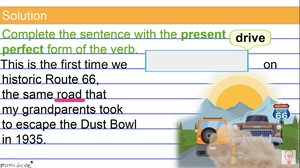Hi, everyone. Welcome to club UX. In today's video, we are going to discuss about what is a prototype and we'll also discuss the three types of prototypes. Okay. Let's start with a story. Let's suppose that you are a CEO of this big manufacturing company, which manufactures airplanes. It was a, your long and impending dream to manufacture this new state ofthe art aircraft, which has never been manufactured before. It would run on thousand percents capacity. It will have all the state of the art facilities. Like it will have a swimming pool or maybe even a child's play area. I mean, humans can have limitless fantasies. Right? Okay. So now how would you go about it? Would you just manufacture the aircraft and bring you to the market? If you're planning to do that by friend, then it is the beginning of the end of your business.
The logical way to approach it is to go step by step, create a sketch of your idea on a paper, get the feedback from your team members. I trade your sketch, and then again, present it to your team members again, get the feedback, maybe create a visual representation of your idea with the help of a cardboard, a paper, or maybe with the help of plastic, anything which would help you to create a representation of visual representation of your idea. Get the feedback from your team members. Again, I trade your visual representation, then maybe create a 3d mockup of your idea. All of this would help you to get feedback from your team members. Your team members can be from technical team engineering team, product team, design team, and so on. All of them would be able to guide you. Is it even worth to launch the product in the market or not?

This is how you create winning products. The visual representation of the idea that you just created is called as a prototype. A prototype is a scale down version of a product. It is a visual representation of your idea and allows you to test your ideas directly with the users before developing into a full fledged product before spending time, money and resources in creating and launching a product market. You have to ask questions on three aspects. Does the product solve the user problem? Does it score high on usability? And is it even user friendly or not? Prototyping helps you to answer all these questions. You can use the visual representation of your idea, test it with your team members, as well as test it with your target users. Your target users are somebody who's going to ultimately use the product. So it's very important to get the feedback from the users as well.
The visual representation of your idea is called as a prototype. Now we have three types of prototypes, low fidelity, prototypes, medium fidelity prototype, and high fidelity prototype in prototypes. Fidelity means the detailing and the function of a prototype. If a prototype is low in detailing and low in functionality, it is called as low fidelity prototype, a prototype, which is high on functionality and high on detailing. It is called as high fidelity prototype let's discuss about each and every prototype step by step. Now, fidelity are the prototypes, which are, are best used during the early stages. They had to make changes very quickly and very fast. Some examples of flow fidelity, prototype or paper prototype that you can see on the screen. All cutouts here, you can see that I have created paper prototype of one of my UX design project of application that I designed.
And here you have a cutout of hovercraft. It is simply made up of a wooden stick, plastic and cardboard. Then you have medium fidelity prototype. They are more functional as compared to low fidelity. However, the functionalities are limited. The simplest example is a wire frame that you can see on the screen. It is more functional than low fidelity, however, less functional than your high fidelity prototypes. Your high fidelity prototypes are often mistaken as the final product. They are closer to the finished product. However, they are highly functional and engaging, but takes longer to be. And costly. For example, you can see on the screen that I have shared a UI mockup for one of the application that I created with the help of Adobe XT. We also have a high fidelity 3d mockup. 3d mockup is a three dimensional digital model. Typically of laying down many the, of a material in succession.
When you are into the initial phases of your product development process or into your UX design process, it is better to use low fidelity prototype, simply sketching screens on paper or creating cutouts of a product would help you to get feedback from your team members. Use that feedback to create, create medium fidelity and high fidelity prototypes. And again, take feedback from your team members and your target users as well. So guys, in this video, we discussed about three types of prototypes. We will also have another video where we will discuss about what is paper prototype and what is sketching. We will do a fun practice exercise as well. Stay tuned for more videos, do check out our website, uti.io, and you will find a lot of articles on the topic. You have any questions you can ask me in the command section below, subscribe to our channel for more videos on UI UX, design thinking and prototype.





